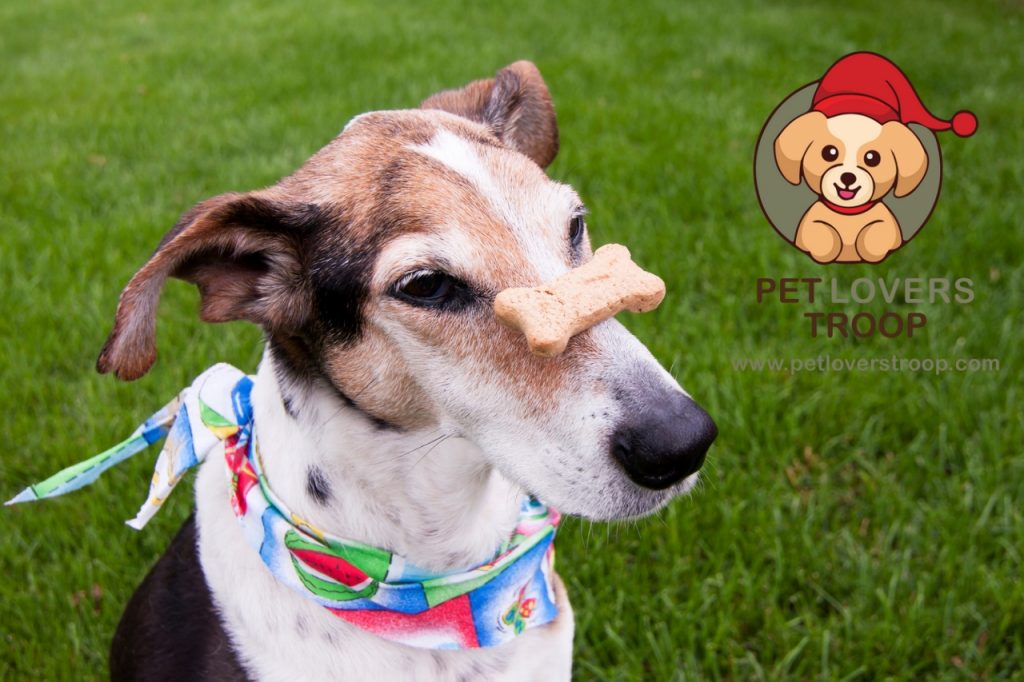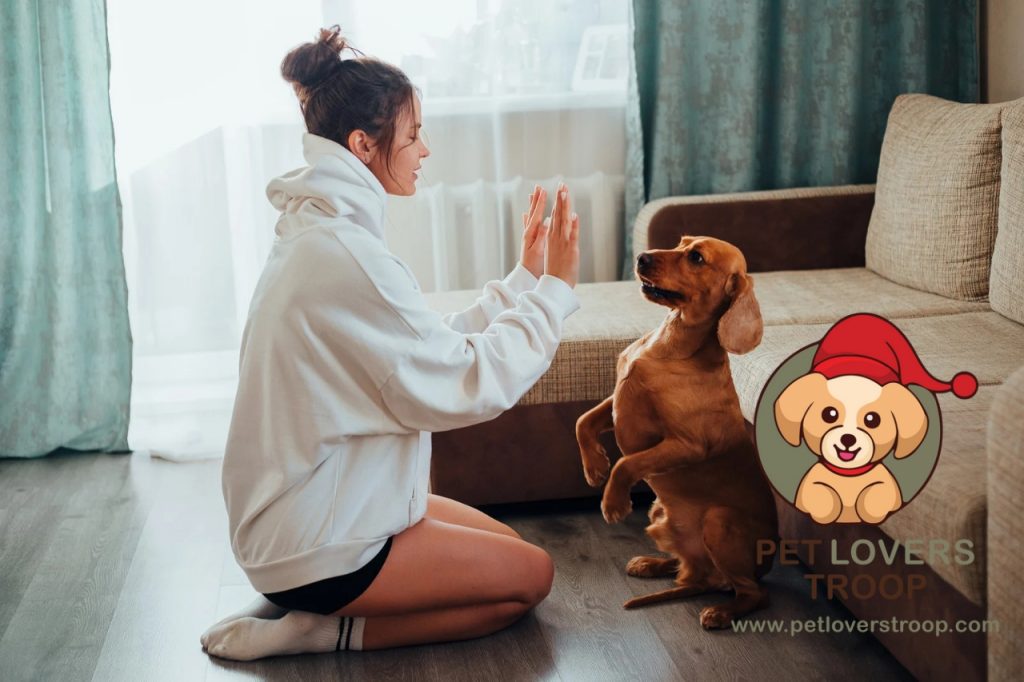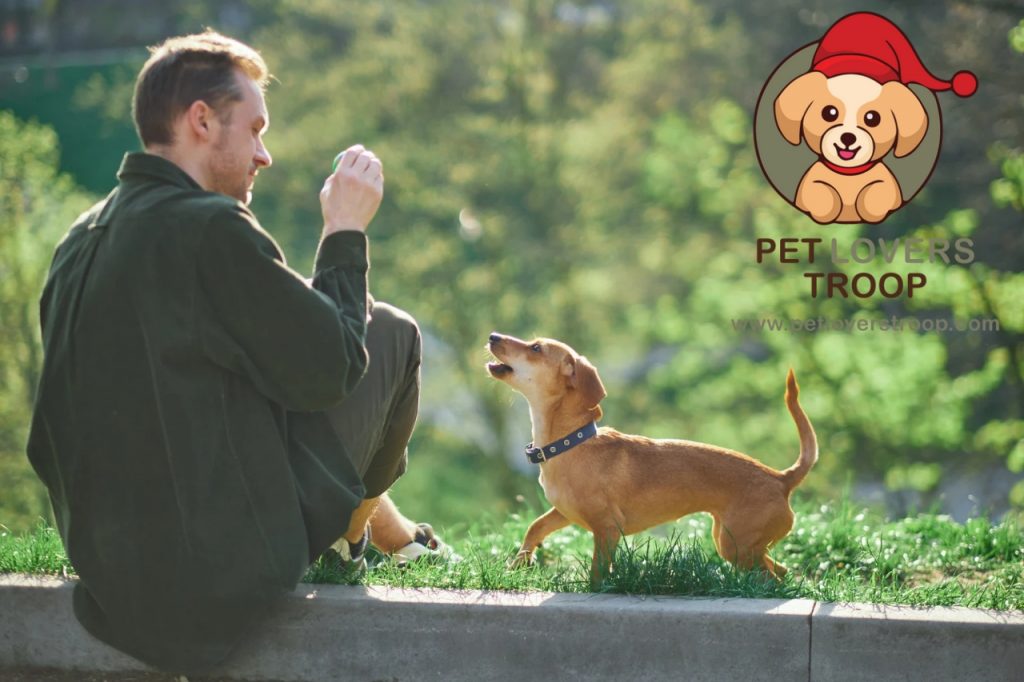Bringing a dog into your home is an exciting and rewarding experience, but it also requires dedication and effort. Dog training goes beyond teaching commands because it lets you develop trust while protecting safety alongside deepening your connection with your furry companion. The acquisition of appropriate training avoids unwanted behaviours which allows families to experience increased manageability and enjoyment.
With patience and the right techniques, you can transform training into a fun and rewarding journey. Whether you’re a first-time dog owner or looking to refine your pet’s skills, this dog training guide will provide the essential steps you need to teach dog basic commands step by step.

Why Teach your Dog Basic Commands?
Dog Basic Commands such as “sit,” “stay” and “come” that you should teach your dog to present more than occasional entertainment. Putting your dog in “stay” can stop them from entering roadways but using “come” maintains their connection when you let them roam off their leash.
Check out: How to Read Dog Body Language?
Through basic dog training, you help stimulate your pet’s mind which results in both reduced boredom and less destructive actions. Natural dog curiosity benefits from mental stimulation because dogs will display fewer unwanted behaviours. A properly trained dog becomes socially accepted so you both can enjoy trips and public gatherings without stress.
Getting Started: Essentials for Dog Training
Establishing a firm foundation stands as the essential requirement before starting command teaching. The correct training environment along with an appropriate approach will accelerate your dog’s ability to learn new things.
- Create a Positive Environment: When dogs live in safety and receive the love they tend to thrive. Positive reinforcement methods involving treats or toys alongside verbal approval teach your dog useful behaviours. Collaborative approaches produced superior results since punishments tend to make dogs fearful and learningable.
Check out: How Often Should You Feed Your Dog? Setting the Right Dog Feeding Schedule
- Keep Sessions Short: Puppies together with older dogs show limited periods of focus. Time your sessions to be between five to ten minutes. Short training sessions that happen often provide better benefits compared to the sense of exhaustion that comes from extended practice. Periodically end your training with a positive conclusion so your dog develops excitement about sessions.
- Choose a Quiet Space: Begin training your dog in an environment where you eliminate potential distractions. You should add new distractions after your dog reaches sufficient skill levels with basic commands.
- Use Consistent Commands: Each command has to receive a consistent word selection and vocal tone. Your dog will easily recognize the intended action after hearing a consistent verbal cue.
- Patience is Key: Dogs learn at different rates. The learning of some commands requires minutes but other commands need weeks of dedicated practice and repetition. Your coursework success will depend on both patience and recognizing moments of achievement throughout your training process.
Read more: 13 Best Ways to Exercise With Your Dog
- Timing is Everything: Reward your dog right after executing the behaviour you have taught them. Soon after completing the behaviour, the dog sees the reward to create stronger learning associations.
Step-by-Step Guide to Teaching Basic Commands
Teaching dog basic commands through structured methods operates both as an opportunity to build good behaviour in dogs and as an avenue to strengthen the human-dog relationship. All commands you teach your dog help to build their confidence while providing better control over daily routines for both of you.
1. Teaching your Dog to Sit
The “sit” command functions as the simplest training element because it enables the basis for additional instructions. Along with its usefulness for preventing undesired behaviours, it also functions as a tool to stop accidental hopping or impulsive movements.
Have a look at: Best Nail Cutter for Dogs to Safely Use at Home
Steps:
- Start by bringing food in front of your dog’s nose to make them turn their focus in your direction.
- You need to use tantalizing reward movements to let dogs track the food while their body automatically sinks to the floor.
- When your dog’s bottom makes contact with the floor you should give the “sit” command while keeping your voice even and then give your dog their treat and verbalize praise.
- Practice this behaviour training several times each day across different environments for establishing reinforcement.
Know more about: Exploring Different Pitbull Dog Types: A Guide to their Nutrition, Temperaments, and Characteristics
Additional Tips:
- You should guide your dog to sit while using hand motions that direction upward and placing the reward close to their face.
- When your dog responds reliably to your hand signal you should begin teaching them the verbal command “sit.”
- After your dog learns the desired behavior advance toward removing treats completely while limiting rewards to sometimes but maintain steady behavior growth.
2. Teaching your Dog to Stay
Having “Stay” as your dog’s command establishes their ability to stay in position regardless of whether situations are distracting or dangerous. With this command your dog learns to control impulses as well as achieving calmness.
Have a look at: Affenpinscher Dog 101: Everything You Need to know about this Unique Breed
Steps:
- The training begins with a “sit” command to your dog.
- Gaze into their eyes while holding your palm out towards them and tell them “stay”.
- Take one step back. When your dog maintains position correctly issue a reward and use a verbal affirmation of “good stay.”
- You should lengthen both the space your dog moves through and how long they remain there. The teaching method includes advancing two steps aside while waiting for several seconds before giving a treat.
Know more about: Dog Training: Ten Essential Commands Every Dog Should Know
Advanced Tips:
- Practice in various environments to ensure your dog can stay even with distractions like other dogs, people, or noises.
- Use a release word like “okay” or “free” to signal that the stay command has ended.
- If your dog moves before the release word, gently guide them back to the original position and try again.
3. Teaching Your Dog to Come
Among all important commands “come” has two vital functions for off-leash daytime usage and crises. The command serves two purposes: ensuring dog safety while fighting potential accidents.
Steps:
- First start in a controlled area free of distractions. To maintain better control you should put a leash on your dog.
- Involve their name followed by “come” so that you use a happy cheerful voice while addressing them while speaking.
- Stretch the leash when your dog needs direction so they can reach you then praise them immediately for completing the command.
- Start your dog with brief training indoors before working in progressively busier outdoor locations.
Read more: 12 Easy Tricks to Teach Your Dog for Better Behavior
Additional Tips:
- Playing hide and seek will make learning the “come” command a lot more enjoyable for your dog.
- Your dog should receive a reward when they come to you regardless of previous behaviour. By rewarding your dog promptly after communication they will understand that “come” provides good results.
- Letting “come” be only used for rewarding purposes avoids creating bad ties between the spoken word and the idea of being disciplined.
4. Teaching Your Dog to Lie Down
Your dog needs “Down” as a peaceful order to stay under control while feeling anxious during energy-intensive or stressful moments. This Dog Basic Command also functions at vet appointments or while greeting visitors.
Learn more: Best Nail Cutter for Dogs to Safely Use at Home
Steps:
- The beginning of this process should find your dog comfortably seated.
- Bring the treat near your dog’s nose to slowly drag it downward so they will follow.
- Commands “down” when their chest reaches the floor and awards them instantly.
- The dog should get regular training sessions while you should phase out treats once the dog learns the “down” command.
Advanced Tips:
- Train your dog to respond to the “down” command at all locations you choose starting from busy outdoor areas through quiet indoor spaces to maintain consistency.
- When your dog understands basic “down” you should incorporate it with “stay” commands to build their training abilities.
Have a look at: Exploring Different Pitbull Dog Types: A Guide to their Nutrition, Temperaments, and Characteristics
5. Teaching your Dog to Leave it
The “leave it” command can prevent your dog from picking up harmful or unwanted items. This is especially important for curious dogs who like to explore with their mouths.
Steps:
- Hold a low-value treat in one hand and a high-value treat in the other.
- Show your dog the low-value treat, say “leave it,” and close your hand if they try to grab it.
- Once they stop trying, reward them with a high-value treat from the other hand.
- Gradually progress to placing the treat on the floor and practising the command.
Additional Tips:
- Practice with different objects, such as toys or household items, to generalize the command.
- Reinforce the command frequently to ensure reliability, especially in real-world situations.
Check out: Ten Common Dog Diseases: How to Recognize Symptoms and Prevent Them
6. Teaching your Dog to Heel
“Heel” teaches your dog to walk calmly beside you without pulling on the leash, making walks more enjoyable and safe.
Steps:
- Start with your dog on a leash in a quiet area.
- Hold a treat in your left hand near your hip to guide your dog’s position.
- Say “heel” and start walking slowly. Reward your dog every few steps if they stay beside you.
- If they pull ahead, stop walking and gently guide them back into position.
- Gradually increase the duration and practice in different environments.
Additional Tips:
- Use a clicker to mark correct behaviour if desired.
- Keep training sessions short to maintain focus and enthusiasm.
7. Teaching Your Dog to Drop It
“Drop it” is vital for ensuring your dog releases objects, especially if they pick up something dangerous.
Steps:
- Offer your dog a toy and let them hold it in their mouth.
- Show them a treat and say “Drop it” in a calm voice.
- When they release the toy, reward them with the treat and praise.
- Practice this repeatedly until they respond reliably.
Check out: Epileptic Seizures in dogs: Symptoms, associated risks and how to comfort them
Advanced Tips:
- Use this command during playtime with a fetch to reinforce the behaviour.
- Gradually practice with higher-value items to strengthen their response.
8. Teaching your Dog to Wait
“Wait” teaches your dog to pause before proceeding, which is useful during meals or when opening doors.
Steps:
- Hold your dog’s leash or stand near them.
- Say “wait” and hold your hand up as a signal.
- Take a small step back. If they stay in place, reward them.
- Gradually increase the distance and duration.
Have a look at: Cat Crazy Moments: Unraveling the Mystery of Your Feline’s Wild Antics
Additional Tips:
- Pair the “wait” command with doorways or food bowls to create practical applications.
- Always release them with a cue like “okay” or “go.”
9. Teaching your Dog to Speak
“Speak” can be a fun trick and also a way to teach your dog controlled barking.
Steps:
- Choose a word like “speak” and say it in an excited tone.
- Use a trigger like a knock on the door or a favourite toy to encourage barking.
- When your dog barks, reward them immediately and say “Speak.”
- Practice consistently to reinforce the behaviour.
Check out: Best Dog workouts: Fun daily exercises for your pup to keep them hale and hearty
Additional Tips:
- Teach the “quiet” command alongside “speak” to control barking.
- Avoid overusing this command to prevent excessive barking.
10. Teaching your Dog to Roll Over
“Roll over” is a playful trick that also strengthens your dog’s focus and coordination.
Steps:
- Start with your dog lying down.
- Hold a treat near their nose and move it toward their shoulder, encouraging them to roll onto their side.
- Continue moving the treat in a circular motion until it rolls over completely.
- Reward them immediately and say “Roll over.”
- Repeat this process until they perform the trick consistently.
Know more about: Dog neutering surgery- What to expect and how to handle your male furry friend
Additional Tips:
- Break the trick into smaller steps if your dog struggles.
- Keep sessions short and fun to avoid frustration.

Advanced Commands and Tricks
After your dog learns dog basic commands begin working with advanced commands which will help their mind stay active and their body remain agile. Through advanced classes, you build a closer relationship with your dog while providing cognitive exercise that is great for their training.
- Heel: By obeying this command your dog learns to stay close to you on a leash while remaining relaxed and not pulling on the lead. Guide your dog through short approaches and give a reward when they maintain the correct position. Gradually extend your training sessions by moving further distances and repeating exercises in various locations.
- Roll Over: A wonderful exercise which builds your dog’s coordination while maintaining their mental focus. First position your dog with food and afterwards motivate them to flip onto their back before finishing the roll.
Read more: Navigating Grief: What to do When Your Pet Dies
- Fetch: This established game helps dogs learn to obey instructions during their exercise routine. Toss your dog’s favourite toy while instigating them to deliver the toy back to you through treats and verbal acknowledgement.
- Agility Training: Construct an easy backyard obstacle course from cones combined with tunnels and jumps. Move your dog through the obstacles using commands in addition to rewarding them with treats. The training methods of agility build performance abilities as they develop your dog’s confidence level.
- Search and Find: Teach your dog to search by hiding treats and toys around your yard so they can find them while following your commands. Your dog’s natural hunting abilities become active while the game stimulates their mind.
What are the Benefits of Training your Dog?
- Safety: Training your dog to follow dog basic commands such as “stay” and “come” creates safety barriers against accidents when threats appear. Using the command “stay” at the right moment allows you to protect your dog from dangerous events such as traffic or predator encounters.
- Stronger Bond: Through training you build trust with your dog while developing better methods of communication. Building a meaningful strong relationship with your dog becomes possible through shared training periods.
- Better Behavior: Dogs that receive training lose their habit of damaging property through actions like biting and digging in addition to excessive barking. Your dog’s safety becomes enhanced through the use of “leave it” commands which stop it from consuming objectionable food objects.
Check out: Pet-Friendly DIY Projects: Creating Customized Accessories for Your Pets
- Social Skills: Social comfort improves significantly in trained dogs so you and your dog can fully enjoy shared activities together. Your dog becomes an enjoyable companion when it acquires proper obedience which allows you to share all sorts of activities.
- Mental and Physical Stimulation: Training activates both the mental plus physical capabilities of your dog resulting in better holistic health. The commands your dog learns stimulate their brain while activities between fetch and agility training help them stay physically fit.
- Increased Freedom: Trained dogs gain the trust to participate in various activities which enables both leashed and leash-free exploration and interaction while maintaining safety.

Conclusion
Dogs require both time and patience and consistent training approaches to learn dog basic commands but their training rewards you substantially. Having a well-trained dog results in both elemental joy ownership and increased happiness and boosted confidence in your furry companion.
Foundational training should begin by maintaining wholesome teaching sessions while marking down achievements that develop during your journey.
Training your dog represents a prime chance to forge a stronger bond. This easy-to-follow dog training guide puts you on a track toward teaching basic commands to your dog while fostering a serene bond.
